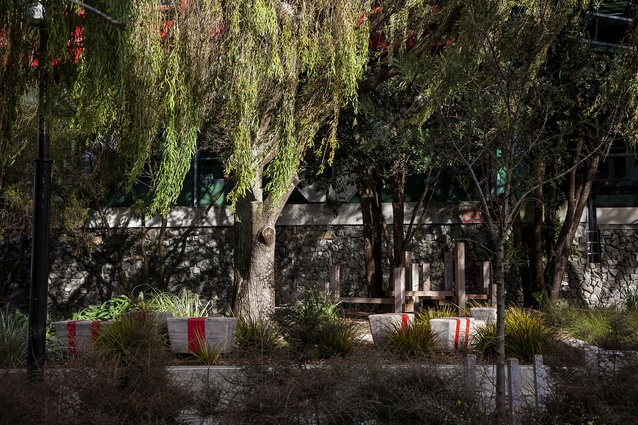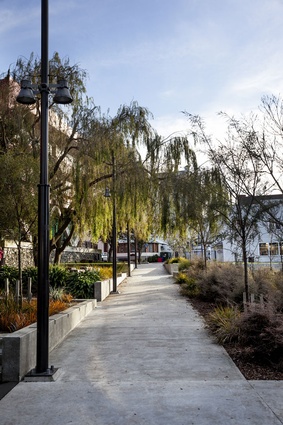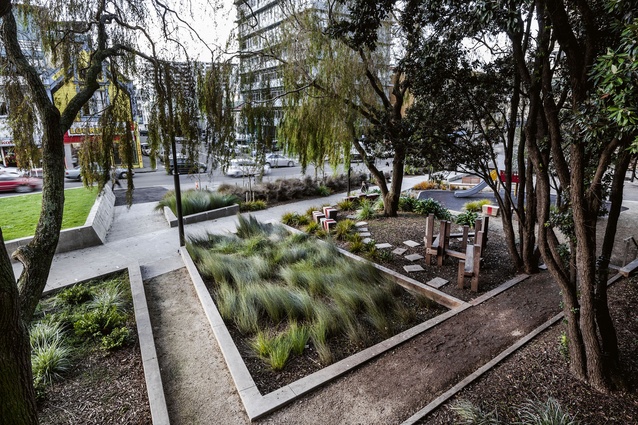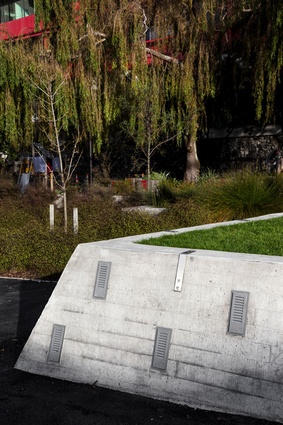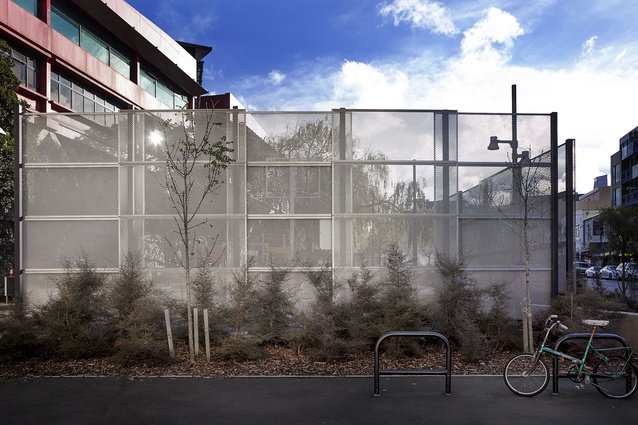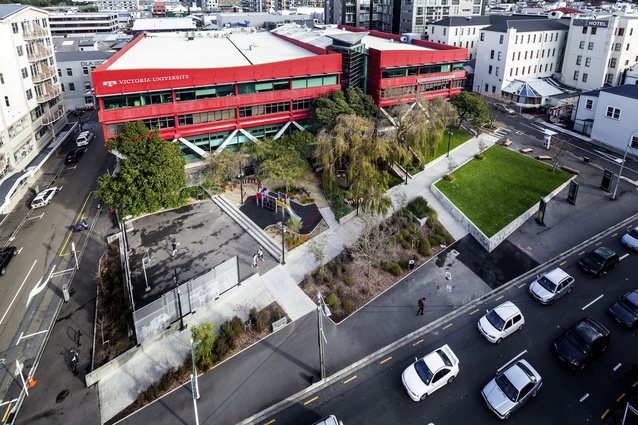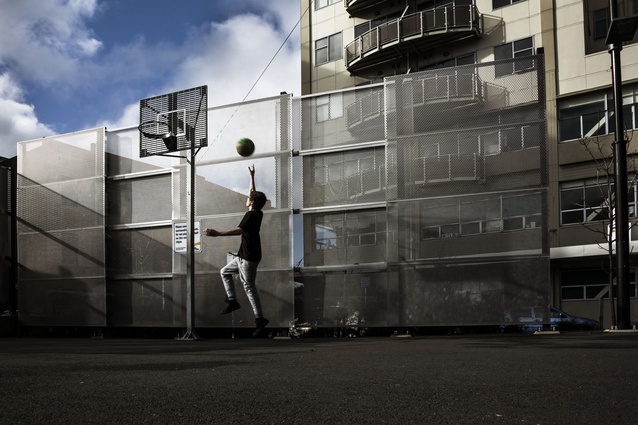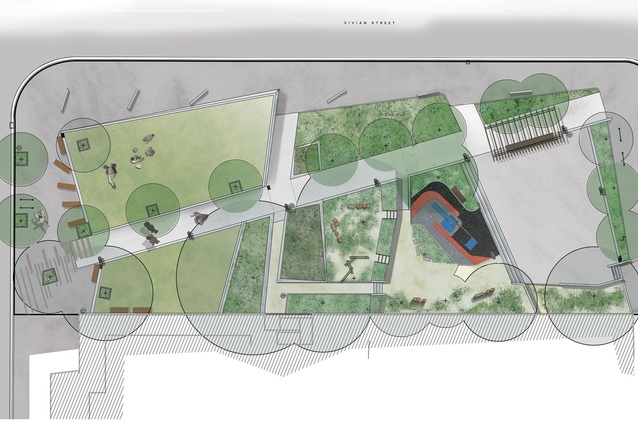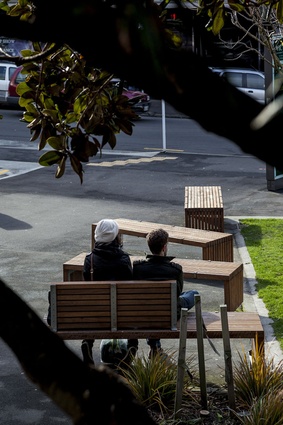Cobblestone Park
A small Wellington park gets revised for a new generation of urban use.
Megan Wraight and I can both exchange anecdotes about the new half-size basketball court in the recently revised Cobblestone Park, Wellington. The court is the pocket park’s full-stop at its Knigges Avenue end. For those familiar with this part of Wellington City, the park runs the width of the block between Knigges Ave and Dunlop Terrace, hemmed in to the south by the great redness of Victoria University’s architecture and design school. To the north, State Highway 1 or, to revert to it’s slightly more friendly moniker of Vivian Street, hums on by.
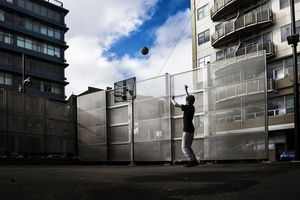
Wraight has a friend that lives in an apartment overlooking the park; she says the basketball players keep him awake at night. At the New Zealand Architecture Awards the night prior to meeting Wraight at Cobblestone Park, I met a student who reported that the noise from the basketball court that made its way into the library was “interruptative”. Perhaps he meant distracting. These things show that you can’t please everyone all the time and, thankfully, the world does not revolve solely around sleep and study. The good news is, quibbles aside, that it’s clear that the court is in use. There is a need for it in the inner city. There’s most likely a good-sized need for other inner-city green park spaces, but that’s another story.
“Having the basketball court and playground together has brought life to the park,” says Wraight, on our walk-through. “It’s opened it up a lot. It used to have a little meandering path through it and, in the centre, a big pool; quite a large pool. It hadn’t had any water in it for years, and it wasn’t used very well at all. You couldn’t see into the park, so it was quite unsafe. We’ve opened it up to the street to get rid of that ‘loitering in the back’ and to capture the sun.”
The park’s previous iteration, details the Wellington City Council website, was put in place in 1974, “in a modernist English character style”. The designer, Mary Buckland, wanted to create a place that was “soft and natural” and “a small restful island in a busy part of the city”.
As a main motivation for the reworking of Cobblestone Park, the council cites the rising number of inner city residents over the last 10 years, which increased pressure on existing open spaces.
Wraight says the small pool was the old park’s centerpiece, but there weren’t a lot of areas for people to actually use. “The edge of the pool, once they emptied it, became a casual seating space. We wanted to keep many of the trees, because they’re reasonably good-sized trees and they give the building, in particular, a lot of shade.”
But we venture ahead of ourselves. Back to the organisation of space. Cobblestone Park has been reworked around a new diagonal pathway, a “spine” that runs diagonally across the site. At the Dunlop Terrace end, the spine lines up with the entrance of the Comfort Hotel. At this end there is a terrace with public seating. The opposite terminus is at the corner of Vivian and Knigges, adjacent the basketball court. This primary circulation route is intersected with another secondary path that runs across through the lawn terraces to the entrance of the university building. As Wraight’s team puts, quite evocatively, I think, in its competition-winning design submission, the spine is “ the ‘definer’ of boundary, the cleaver of space, and the arterial conduit”.
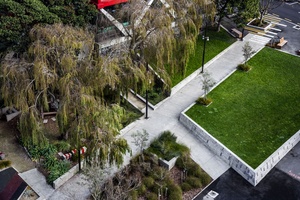
Of course, the other main pedestrian route is the Vivian Street footpath, which has been widened and “tessellated”, to provide what project landscape architect Nicole Russell calls a “filtered edge”. The widening of the edge provides a little extra separation from the cars on the road; the tesselation, which is the fan-like intersection of the terraces with the footpath, which has the effect of encouraging passersby into the park.
For a compact park, Cobblestone caters to a wide audience. There’s the court for basketball and wide steps for an audience to watch; there’s a “set piece” playground for smaller kids, which to my mind could possibly have been slightly more generously scaled, but there are also garden trails for meandering in amongst the planting, and stepping and jumping platforms. There are also gardens that filter the site-generated storm-water runoff; reeds like wind-swept hair that are a softening counterpoint to the angular geometry of concrete-framed terraces.
The concrete work at Cobbleston Park is a highlight. The raked-back, off-form walls make the elevated grass terraces feel like urban islands, precisely cut out, and orientated to catch the sun. I read that slight lean as an encouragement to climb on board – and the incline also makes the pathways feel more generous – sit down and enjoy the overall rhythm of the space.

